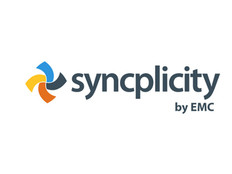Businesses Embrace Enterprise File-Sharing Tools for Security, Flexibility
Over the past decade, as Dallas-based sandwich shop Which Wich expanded to 380 locations in eight countries, the IT staff had to put a wrap on all the free file-sharing software in use across the business, in favor of a consistent solution across the company
Organizations such as Which Wich rely on enterprise file management tools to better secure sensitive documents and reduce the administrative burden of depending on email to transmit large documents. Enterprise products such as Box, Citrix ShareFile and Syncplicity provide organizations with an easier way to share graphics-intensive files and video. While Box runs only in the cloud, many of these products offer both public cloud and private cloud options.
Jon Hartis, vice president of technology for Which Wich, says the company uses Box for about 70 users — mostly corporate employees, but also regional area directors and franchise business consultants.
“We made the move at first as a way to reduce costs on hardware and software maintenance for file servers, as well as to give our users the ability to access their documents anywhere with an Internet connection,” says Hartis.
But there were many other benefits, such as management capabilities. Box enables administrators to restrict document access, manage users in groups and set storage quotas for devices.
Hartis says collaboration between external users also expanded. “We can collaborate more easily with third-party partners and view, edit and share files,” he says. “While we still use email, its use is decreasing because it’s much easier to post large files and video in a folder.”
Box also accommodates Which Wich’s fast-paced growth. Hartis says that over the next few years, the company plans to add 150 to 200 stores; all of which will need documentation for franchisees, agreements, training manuals, product guides, menus, recipes and warranty information.
“From a security standpoint, emailing these large files is not effective,” Hartis says. “It’s also very difficult to do editing and version control in email. Box lets us collaborate in the same file and easily refer back to previous versions.”
Terri McClure, a senior analyst for the Enterprise Strategy Group, says IT departments were put in a bind when people started using consumer-oriented Software-as-a-Service products such as Dropbox and the free version of Box.
“All of a sudden, organizations had corporate data on people’s personal smartphones and tablets, and it created security issues,” McClure says. “The industry responded by building products that had a central dashboard. They offered rudimentary control at first, and now the products have matured to offer more advanced security and rulemaking controls.”
Multiple Ways to Share Files
Josh Bauer, associate director of IT infrastructure for pharmaceutical company Acorda Therapeutics, says Acorda deployed Syncplicity after employees started using free versions of Dropbox and Box, and the IT department needed a better way to manage documents.
Bauer says Acorda was attracted to Syncplicity’s flexibility. Some users access Syncplicity over a browser; others run it as a traditional client application; and still others access files via smartphones or tablets. “Even if they use a notebook or desktop at the office, about 75 percent of our users work outside of the office and like to access their files on a mobile device,” he adds.
Acorda stores non-sensitive data in the public cloud and more sensitive data on Syncplicity servers inside the firewall on a private cloud. Bauer says the company may one day run all of its file management systems over the cloud, but for now, Syncplicity offers it as a hybrid solution that’s appropriate as Acorda’s management team and staff grow more comfortable with the cloud.
Flexibility was also one of the main reasons that professional services and investment management company JLL (formerly Jones Lang LaSalle) uses Microsoft SharePoint.
Shawna Martin, senior vice president for global web and collaboration with JLL, says the company has used Microsoft SharePoint document management for more than a decade. Within the past two years, JLL began using SharePoint Online for collaboration among its internal staff.
Martin says the documents used for collaboration between JLL employees and its business partners are stored on servers inside the company’s firewalls. “Many of our clients, especially financial institutions, require that the documents are stored within our on-premises data center,” she explains.
Acorda’s IT staff uses SharePoint Online to stay abreast of collaboration technology. “Years ago, people started using consumer products such as Dropbox and Box because they were innovative and new and let people get work done,” Martin says. “But now with SharePoint Online, we can stay ahead of the curve, so our employees have access to the latest innovations. Communications tools like Yammer and Delve that let users search for internal content in one place have been very well received.”
Enterprise File-Sharing Advantages
Terri McClure, a senior analyst for the Enterprise Strategy Group, identifies three main benefits of cloud-based enterprise file sharing systems:
- Improved employee productivity: These tools enable employees to share and access files more easily from wherever they are, increasing productivity. Overall, employees are happier when they can work the way they want.
- More efficient collaboration: Employees have access to version control, file logging, editing and messaging, which all help them complete projects quickly and thoroughly.
- Enhanced IT management: Security drives most organizations to use enterprise file-sharing tools. Administrators can set security rules, set storage levels and generate reports that offer a level of visibility into document usage that they’ve never had before.







